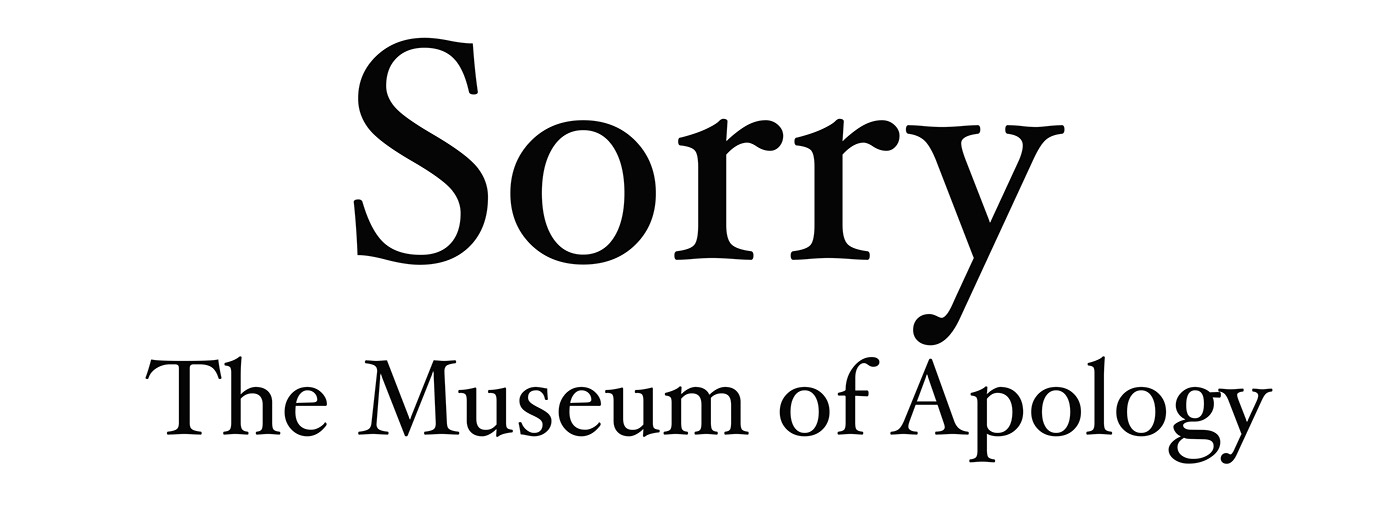

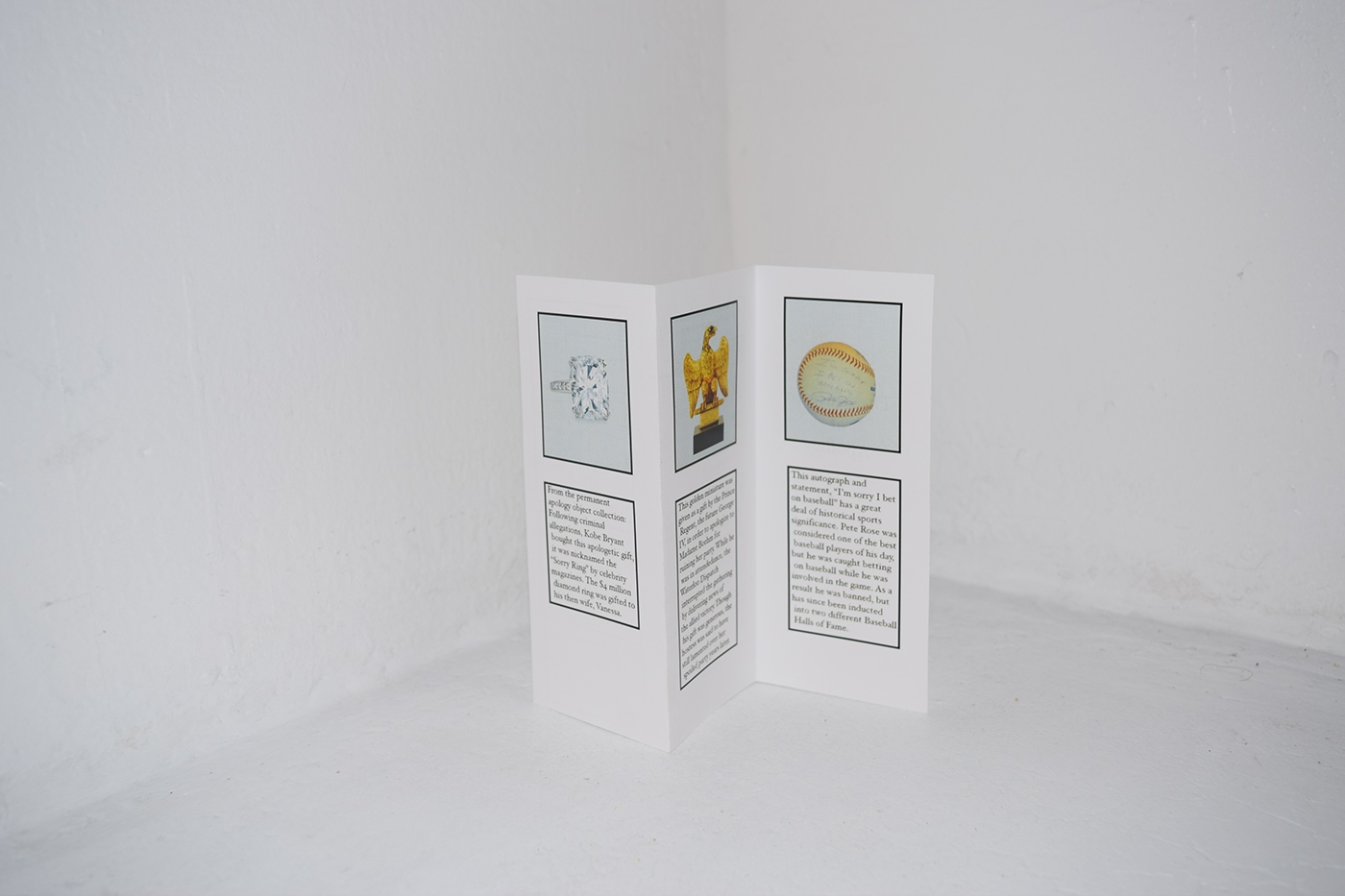

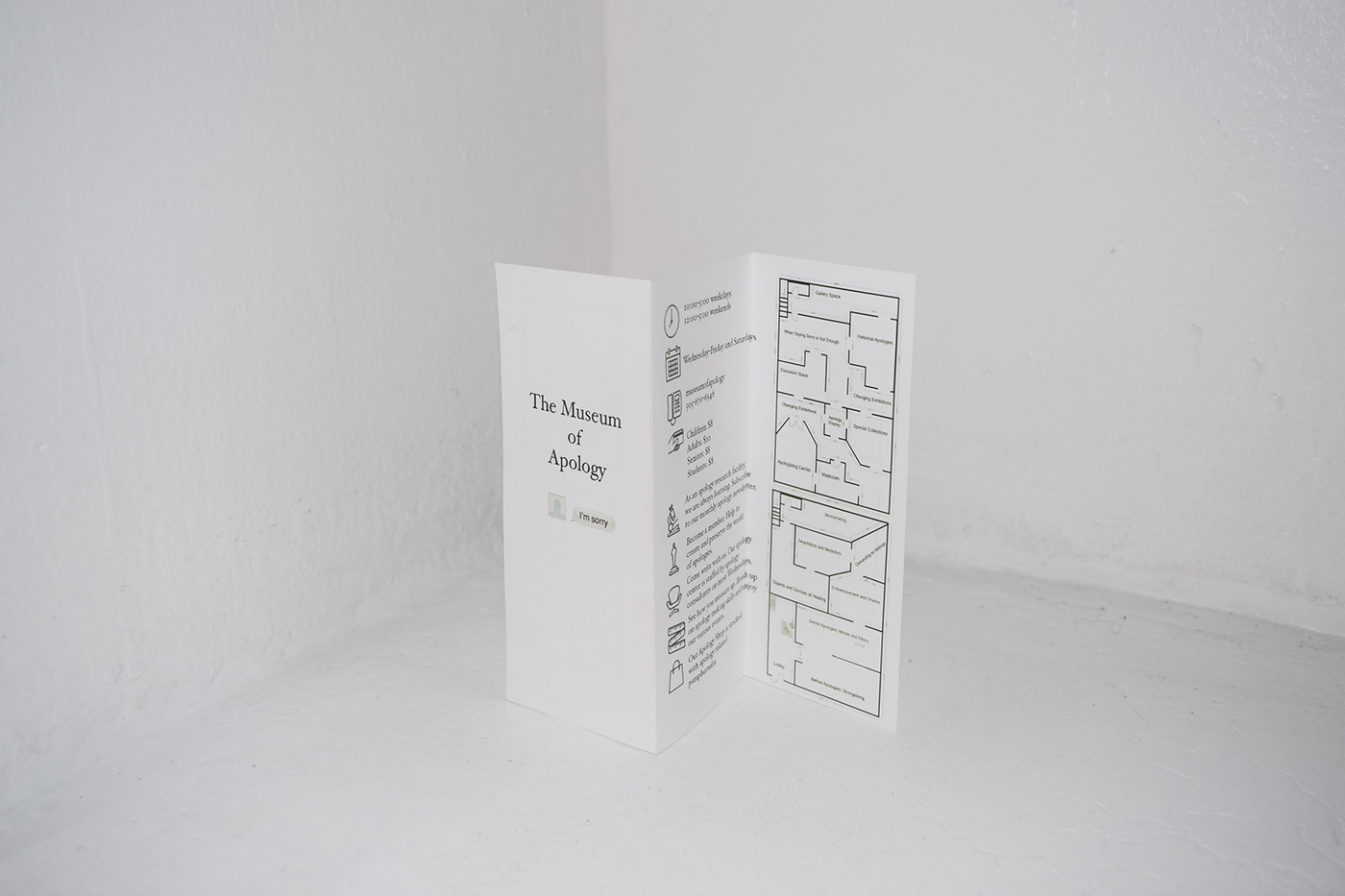

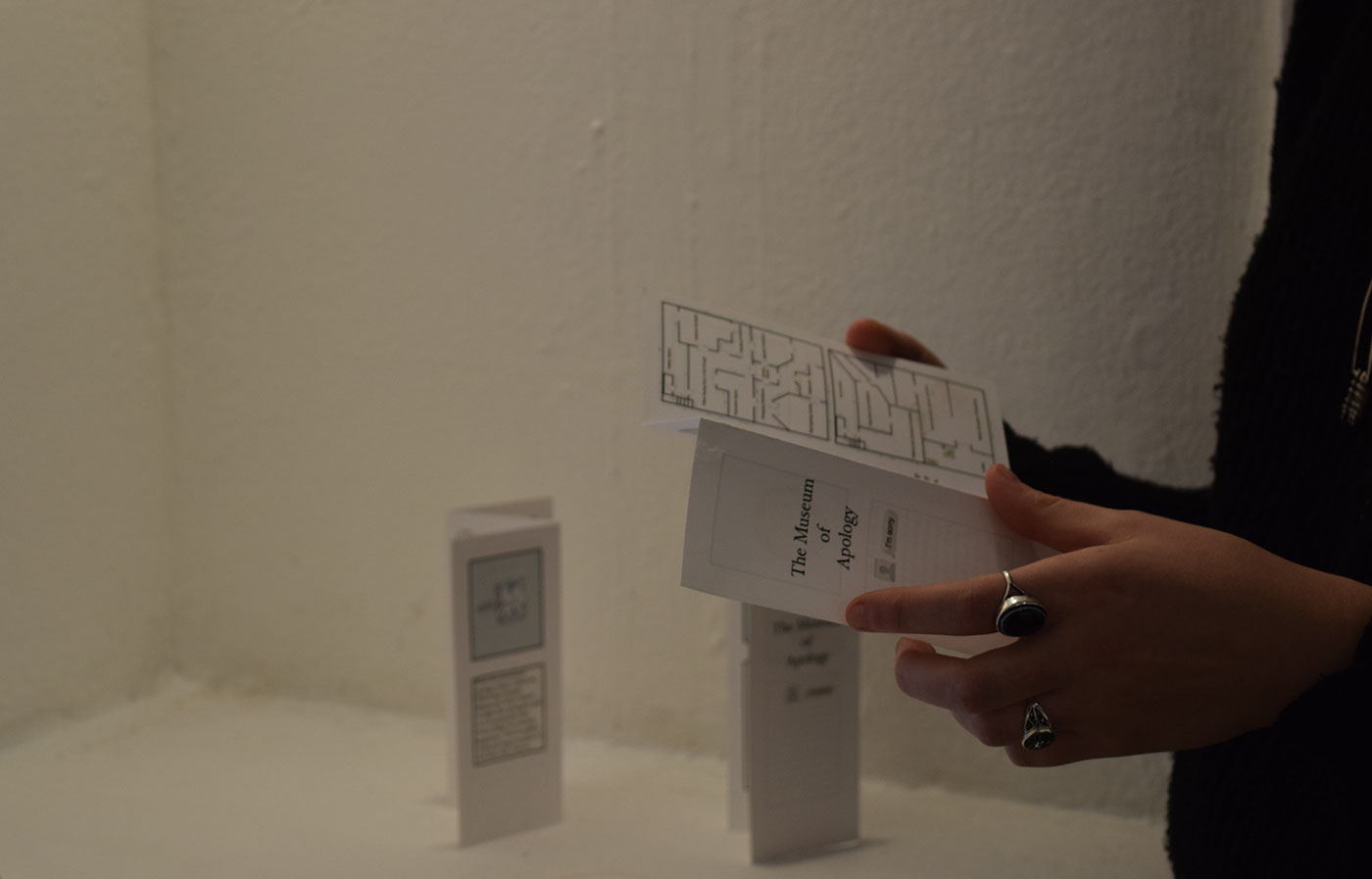
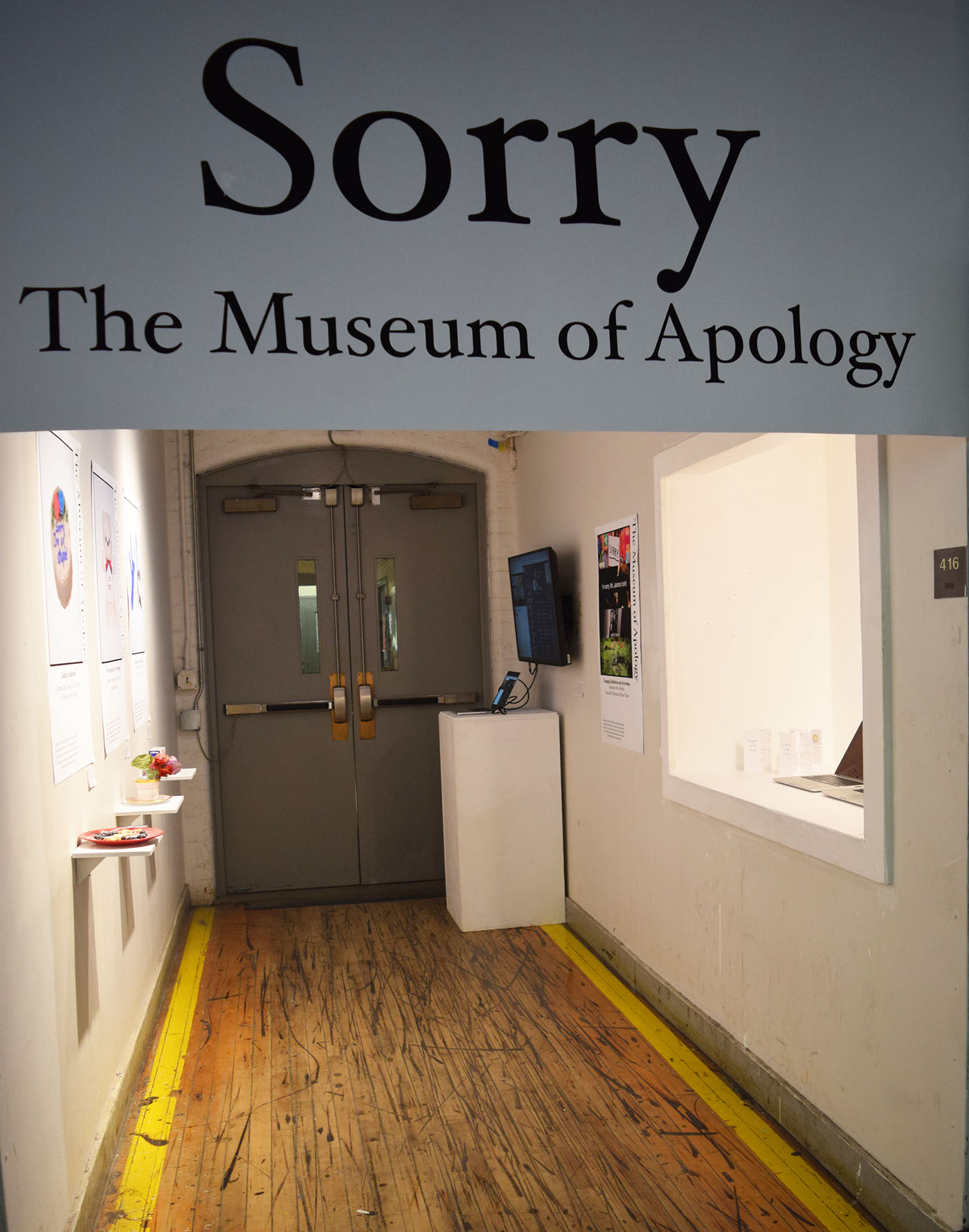
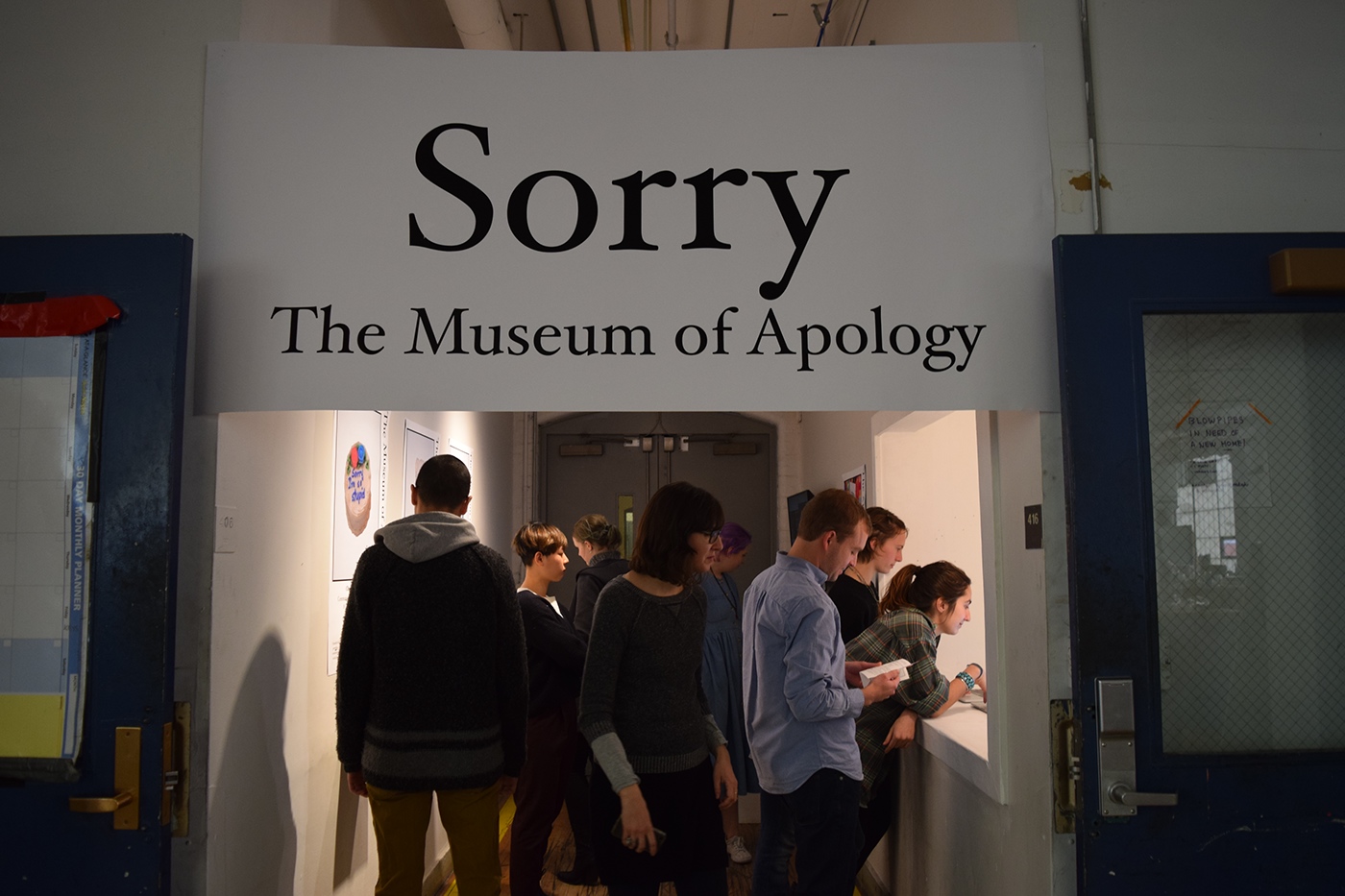

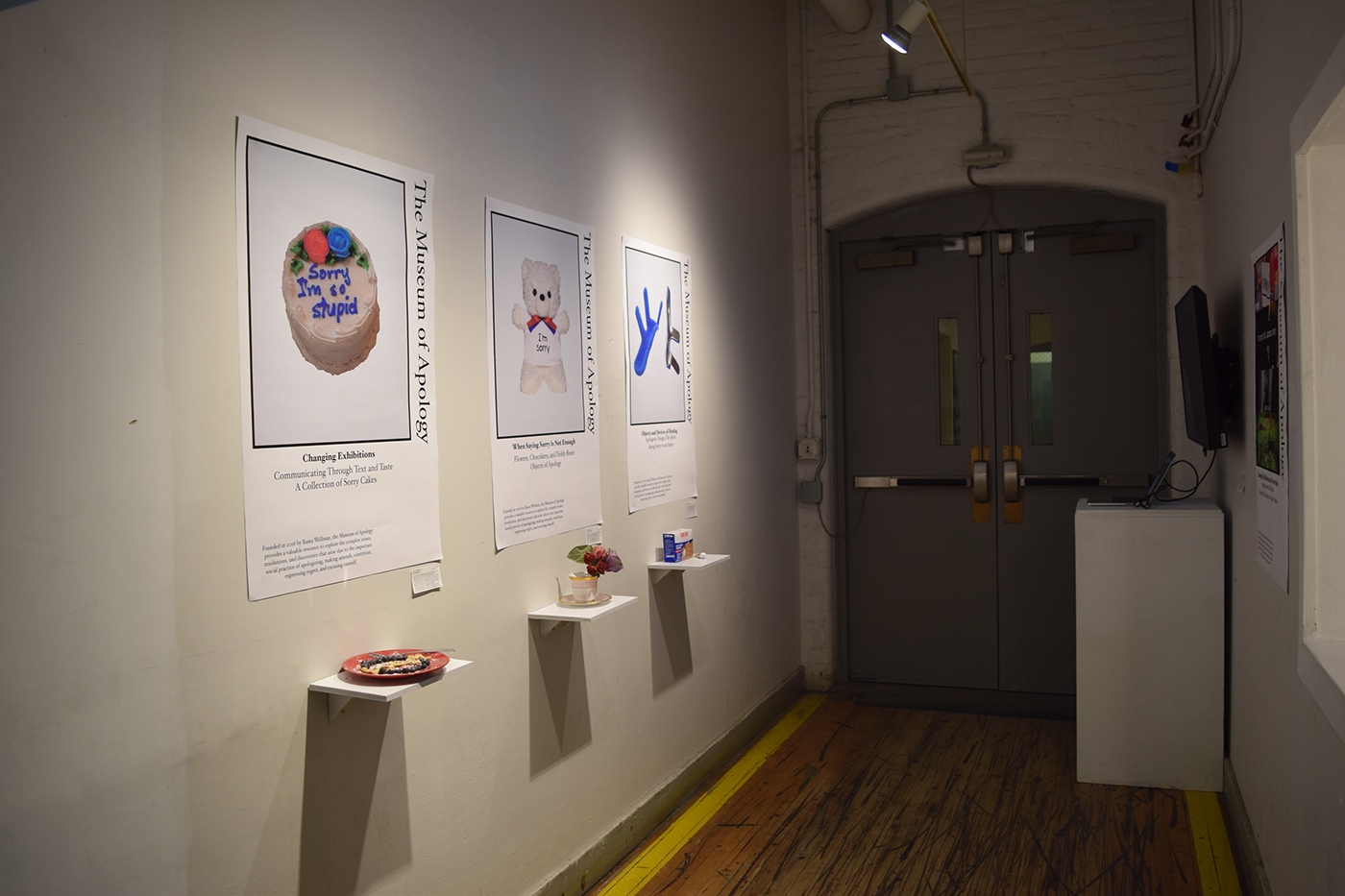
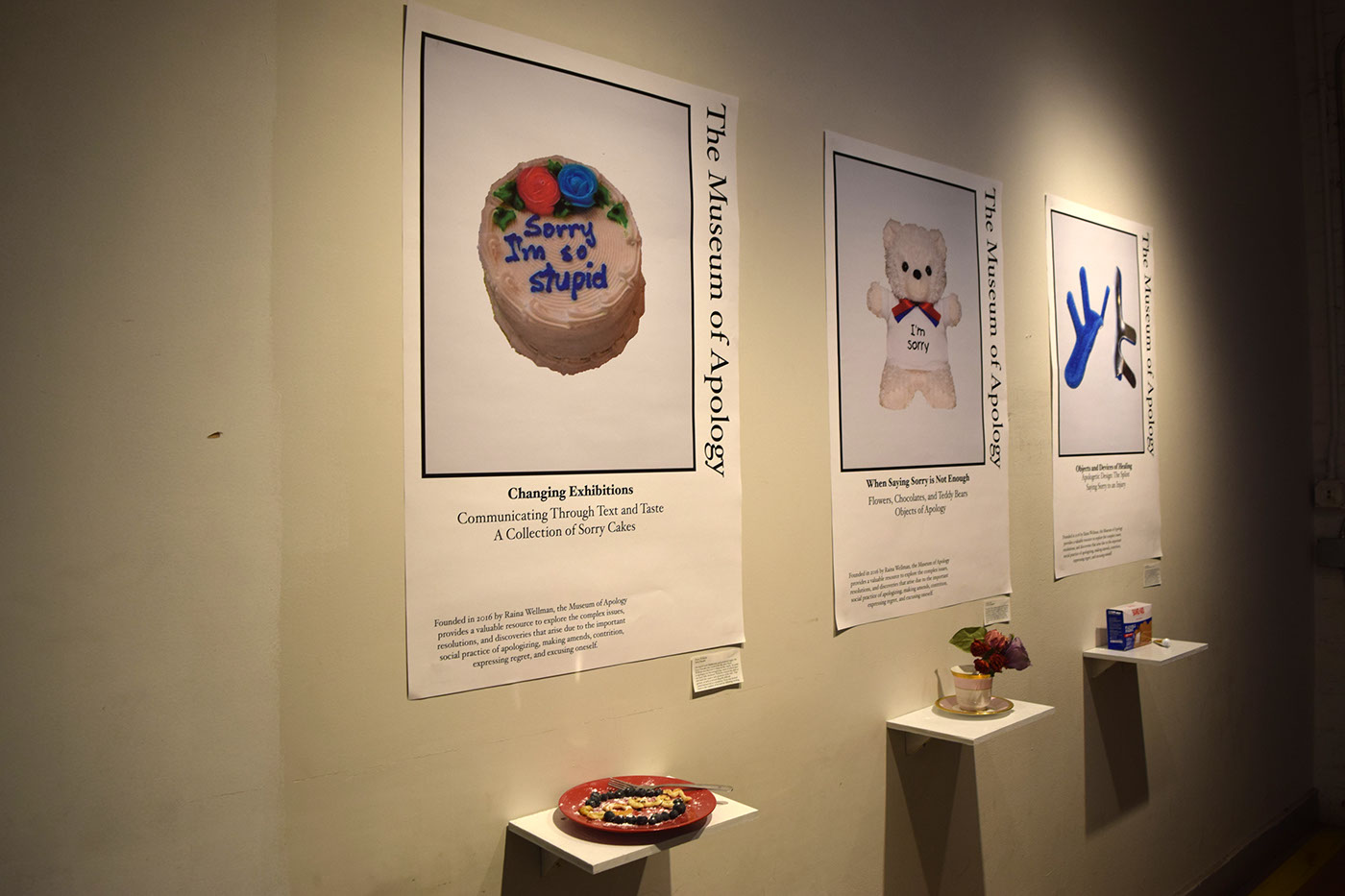


Ari Mabson
Collection of Band-Aids and Neosporin
The Band-Aid holds important culture significance as a device of healing. In some cases, the application of a Band-Aid is said to stop the sensation of pain altogether. This particular collection, a large box of Johnson & Johnson Brand Adhesive Bandages as well as a partially used tube of Neosporin antibiotic ointment are part of Ari’s toiletry collection. When applied, these objects hold power as a symbolical apology to the injury and as an acknowledgement that they were not being careful enough with their body.

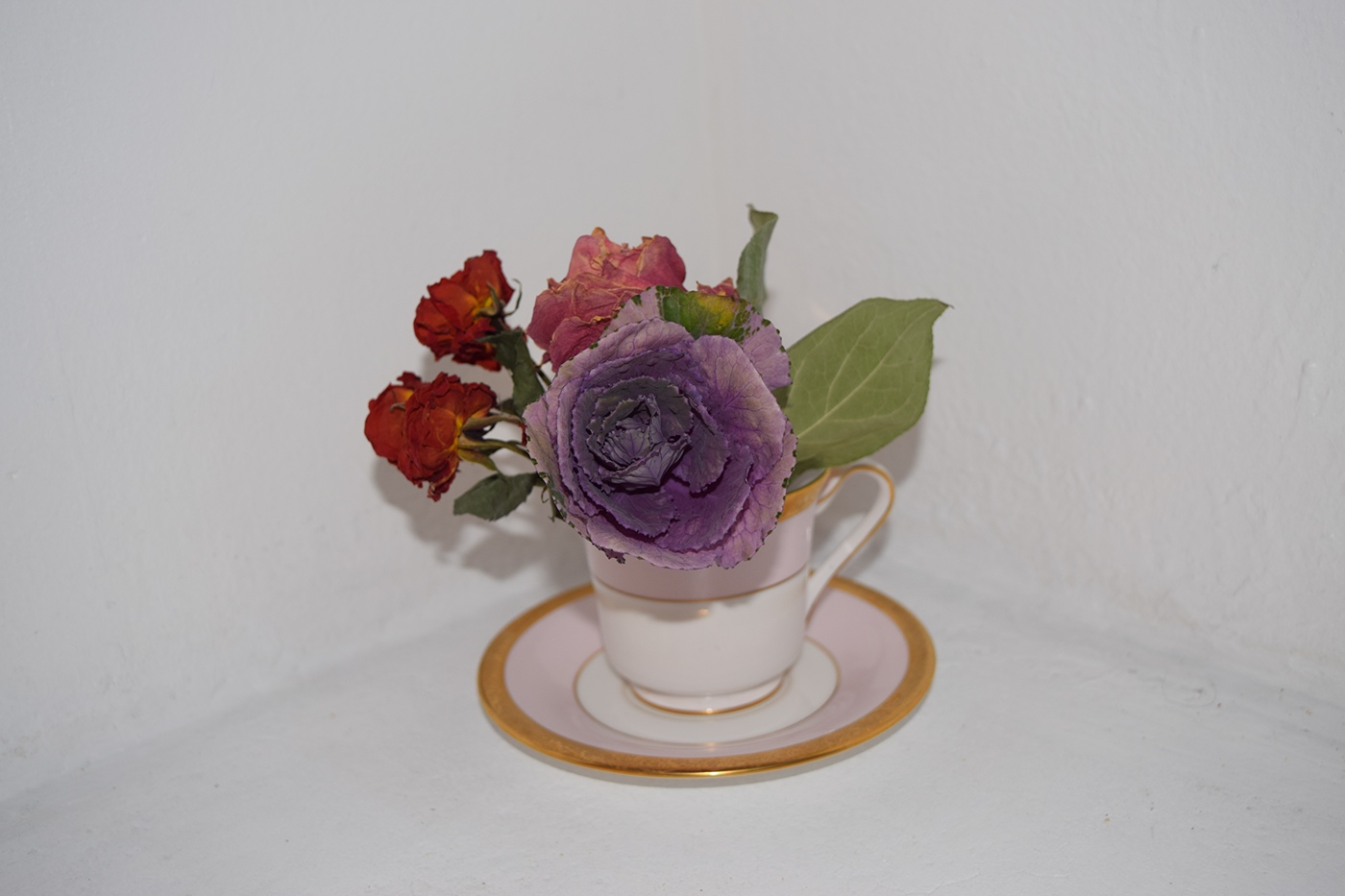
Cecilia Locke
A Floral Arrangement
Maintained in their original condition by the Museum of Apology, this bouquet of flowers and teacup were delivered by Cecilia to a neighbor during a time of mourning as an apology for their loss. The decay of the flowers from their original, fresh condition demonstrates the rushed nature of this heartfelt apology as well as Cecilia’s difficult feelings at the time.


Peter Wilhelm
Sorry Pancake
Decorated with blueberries and powdered sugar, the Sorry Pancake was created the day after Peter Wilhelm was directed to sleep on the couch. In order to apologize for his wrongdoings, most of which have not been fully disclosed, Wilhelm created this dish to win back the respect and adoration of his wife. This gesture, as well as several allegedly difficult conversations led to a resolution. Peter was invited back to the comfort of his bed the following evening.
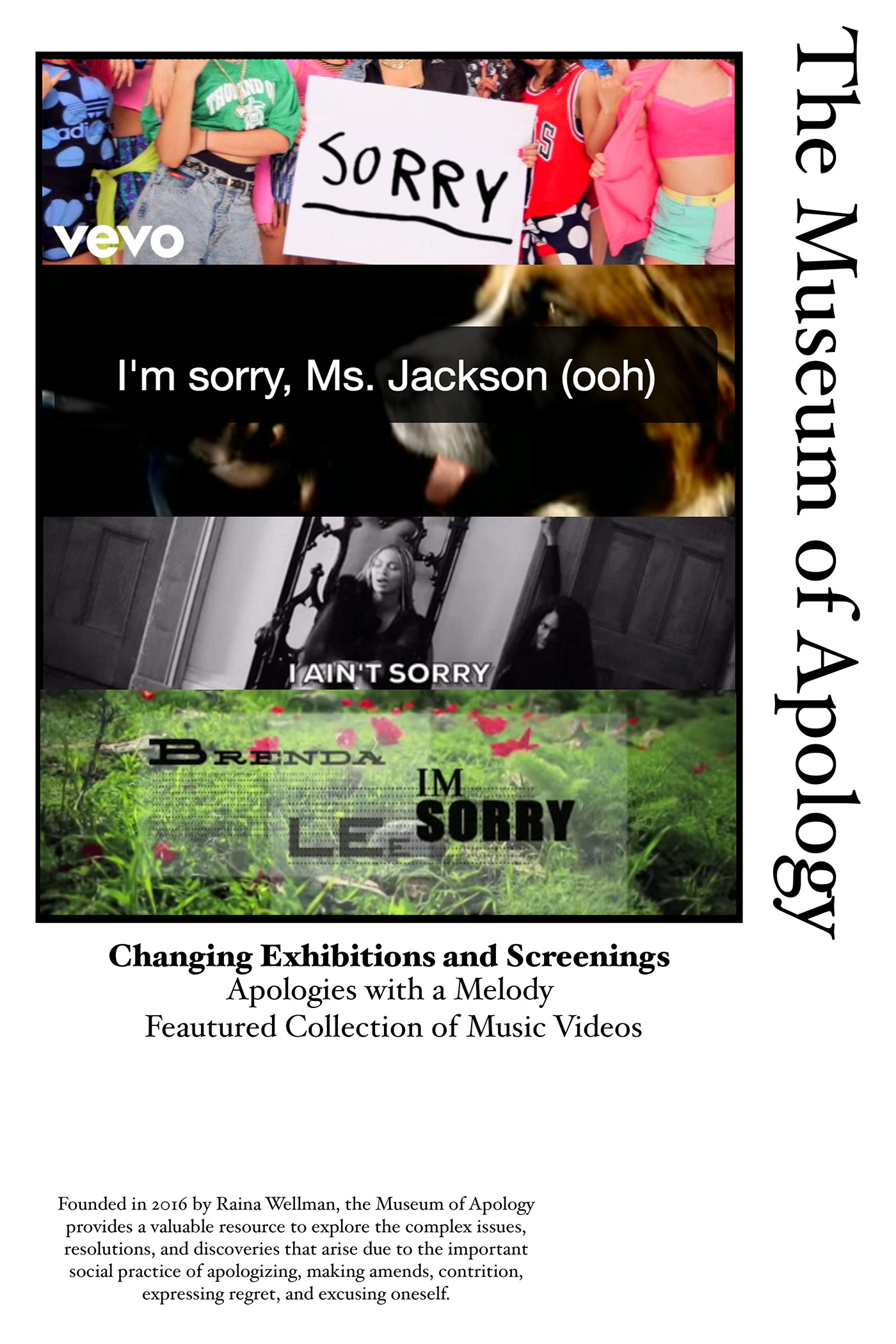
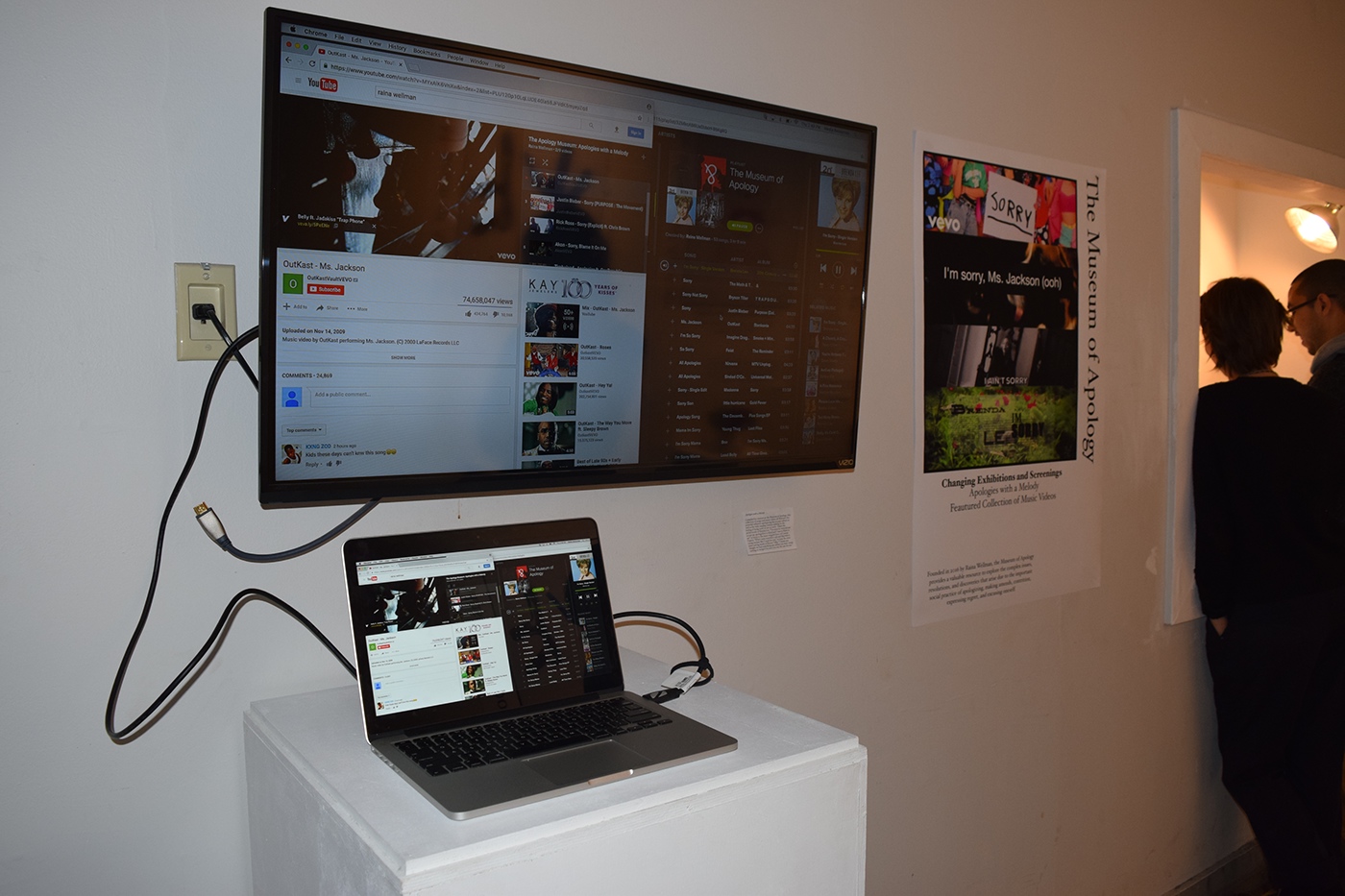
Apologies with a Melody
Compiled by curators at the Museum of Apology, this collection of songs and music videos all illustrate the powerful influence apologizing has on pop culture as well as the wide ranging content relating to the feeling of being sorry or not so sorry. Enjoy the pitiful words of Brenda Lee, “I’m sorry/so sorry/please accept my apology/love is blind/and I was to blind to see” or listen to the more vengeful lyrics of Connie Francis, “Who’s sorry now/who’s sad and blue/who’s crying too/just like I cried for you,” or hear the even more cutting words of Bryson Tiller, “I know you thought we had something special/but you don’t mean nothing to me/girl I’m sorry you not the one for me.”
Museum Mission & Background:
Founded in 2016 by Raina Wellman, the Museum of Apology provides a valuable resource to explore the complex issues, resolutions, and discoveries that arise due to the important social practice of apologizing, making amends, contrition, expressing regret, and excusing oneself.
Why did we begin? After witnessing a series of apologizes induced by various situations, our founder became fascinated by the personal and political nature of apology making. The act of saying sorry is deeply rooted in communities throughout history and the globe. It is evident in every day conversations and prevalent in pop culture creations. Perhaps it is the act of articulating some form of apology that unites humanity.
On Our Collections
The Museum of Apology maintains a permanent collection of pieces and writings relevant to the process of apologizing. Much of this collection is archived online and is viewable in our transitional space, apology display, special collections, and mailroom, as well as dispersed throughout the museum.
Our collection includes a record of many important and thought provoking apology letters, research into non-human animal apology/acknowledgement behavior, sorry cakes, vocal and physical documentation of genuinely delivered apologies, information on the non-apology (within personal and political relations), and apology artifacts.


